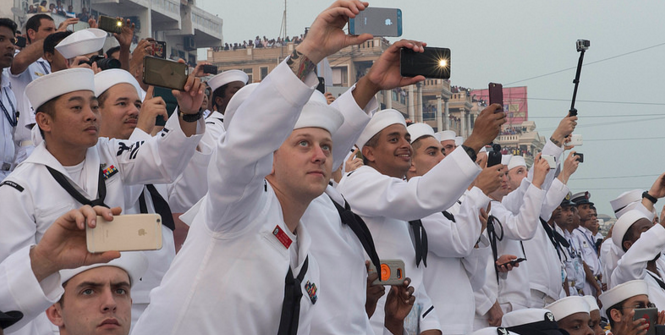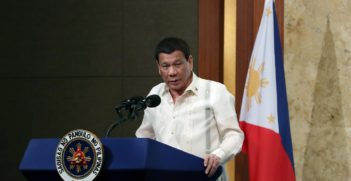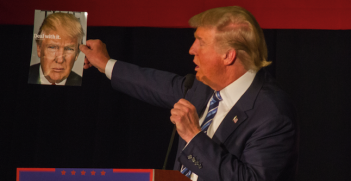Indian Foreign Policy and the Second International Fleet Review

India hosted the second International Fleet Review from 4-8 February at Vishakhapatnam on the east coast of India in the Bay of Bengal. This was an important event for confidence-building given the current climate of maritime insecurity in the Indian Ocean region.
A total of 50 countries participated in the International Fleet Review (IFR), including 22 naval chiefs, 4000 sailors and 90 ships. What is the significance of this event for the Indian Ocean region and how does it reflect on India’s maritime security policy?
The sheer magnitude of the event speaks for its significance in the current context; in 2001, the previous IFR generated a participation of 29 countries, almost half of the present number. The Indian Ocean region has since become the subject of intense scrutiny, being hailed as the ‘centre of gravity’ through which roughly 66 percent of the world’s oil, 50 percent of the global container traffic and 33 percent of the world’s cargo traffic is transported.
Undeniably, this also signifies the enhanced importance of India in the strategic scheme of various countries, including the United States and China. With a vast coastline jutting out into the heart of the Indian Ocean region, a mighty naval presence and potential to project power into the far reaches of the region, India has become the indisputable strategic partner for many nations including Japan, Vietnam and Australia.
The IFR was India’s show of strength, maritime capability and preparedness vis-a-vis conflict situations. The latest acquisitions by the Indian Navy, including the carrier-borne MIG 29K strike fighter, the P8I long range maritime reconnaissance aircraft and the KM-31 AEW helicopter were on display along with the aircraft carriers INS Viraat and INS Vikramaditya.
It was seen as a useful marketing strategy for the “Make in India” initiative of Prime Minister Narendra Modi, with the achievement of 90 percent indigenisation by the Indian Navy in its “float” component and aims for 100 percent indigenisation in its 15-year plan released in 2015.
Furthermore, there were cultural events taking place on the sidelines including folk dances, music and a performance of the epic “Mahabharata”: highlights of Prime Minister Modi’s push towards cultural and religious diplomacy in the region.
More importantly, and unlike the previous IFR, China was a participant in this event, marking a big step towards maritime cooperation with India. As is well known, there are important regional concerns about China’s maritime assertiveness in the South China Sea and the Indian Ocean region, including the building of critical infrastructure on key Indian Ocean region island and littoral states such as Sri Lanka and Pakistan and the patrolling of People’s Liberation Army-Navy’s nuclear submarines in the Indian Ocean.
When interviewed about Indian concerns vis-à-vis China, the Chief of the Indian Navy, Admiral RK Dhowan, somewhat diplomatically played down India’s fears regarding Chinese activities in the Indian Ocean region by maintaining that China had significant stakes in the Indian Ocean Sea Lanes of Communication. When coaxed on the China question, Admiral Dhowan replied that the Indian Navy keeps a very close watch on all the activities taking place in the Indian Ocean and certainly maintains an alert and ‘comprehensive maritime domain awareness’.
Not surprisingly, Pakistan turned down India’s invitation to join the IFR. The India-Pakistan rivalry remains India’s Achilles heel in the region: the latter’s affinity towards China and support for its growing presence in the Indian Ocean region being significant detractors of Indian maritime policy.
Reflections on India’s maritime security policy
Under Prime Minister Modi’s leadership the Indian Ocean has assumed great importance, signalling a shift away from the ‘continental mindset’ of the previous governments. To be sure, India still continues to grapple with territorial border intrusions from China and Pakistan in the north but over the last two years the oceans have attracted the focus of the foreign policy establishment in an unprecedented manner.
In his speech at the IFR, Modi proclaimed: ‘The Indian Ocean Region is one of my foremost foreign policy priorities’. Coming from the first leader after Prime Minister Jawaharlal Nehru to invest significant political and personal capital in developing India’s foreign and strategic presence, this is an important announcement. India plans to host the first-ever Maritime India Summit in April, estimated to attract investment worth US $6 billion and outlining Modi’s vision to tap the potential of the naval realm.
In the last two years, Modi has consolidated bilateral relations with key Indian Ocean region states such as Sri Lanka, Mauritius, the Maldives and Seychelles. During last year’s visit to Seychelles he consolidated a security and development partnership with the island nation by gifting a second Dornier aircraft and inaugurating the Coastal Surveillance Radar Project, facilitated by India, among other agreements. India gifted an off-shore patrol vessel, the Barracuda, to Mauritius, which was commissioned during Modi’s visit last year. In Sri Lanka, Modi inaugurated the reconstructed Northern Province railway line in March 2015 and invoked deep historical, cultural and linguistic ties between India and its small island neighbour. Moreover, India’s willingness to resolve maritime boundary disputes with Bangladesh in the Bay of Bengal in 2014 lends as a marker to its keenness to preserve stability and peace in the seas.
Most importantly, India has emphasised the right of freedom of navigation in international waters at multilateral forums and actively referenced China’s disputes in the South China Sea, marking a great departure from its old foreign policy norms. India’s budding strategic relationships with Japan and Vietnam add to Chinese angst over the former’s renewed interest in consolidating maritime ties, which it perceives to be detrimental to its own interests in the region.
These developments mark a break from the previous governments’ approaches to the maritime realm and could be seen as India’s attempts to correct the missed opportunities of the past and assert leadership in what it calls ‘India’s Ocean’. Given the rise in interest in the Indian Ocean region and changing security dynamics due to China’s economic resurgence, these waters will continue to be an arena of great power politics in the foreseeable future.
Aakriti ‘Bachhawat Bhutoria is a Research Fellow at Griffith University and the Australian Journal of International Affairs Book Review Editor. This article may be republished under a Creative Commons License.



 www.korea.net
www.korea.net
